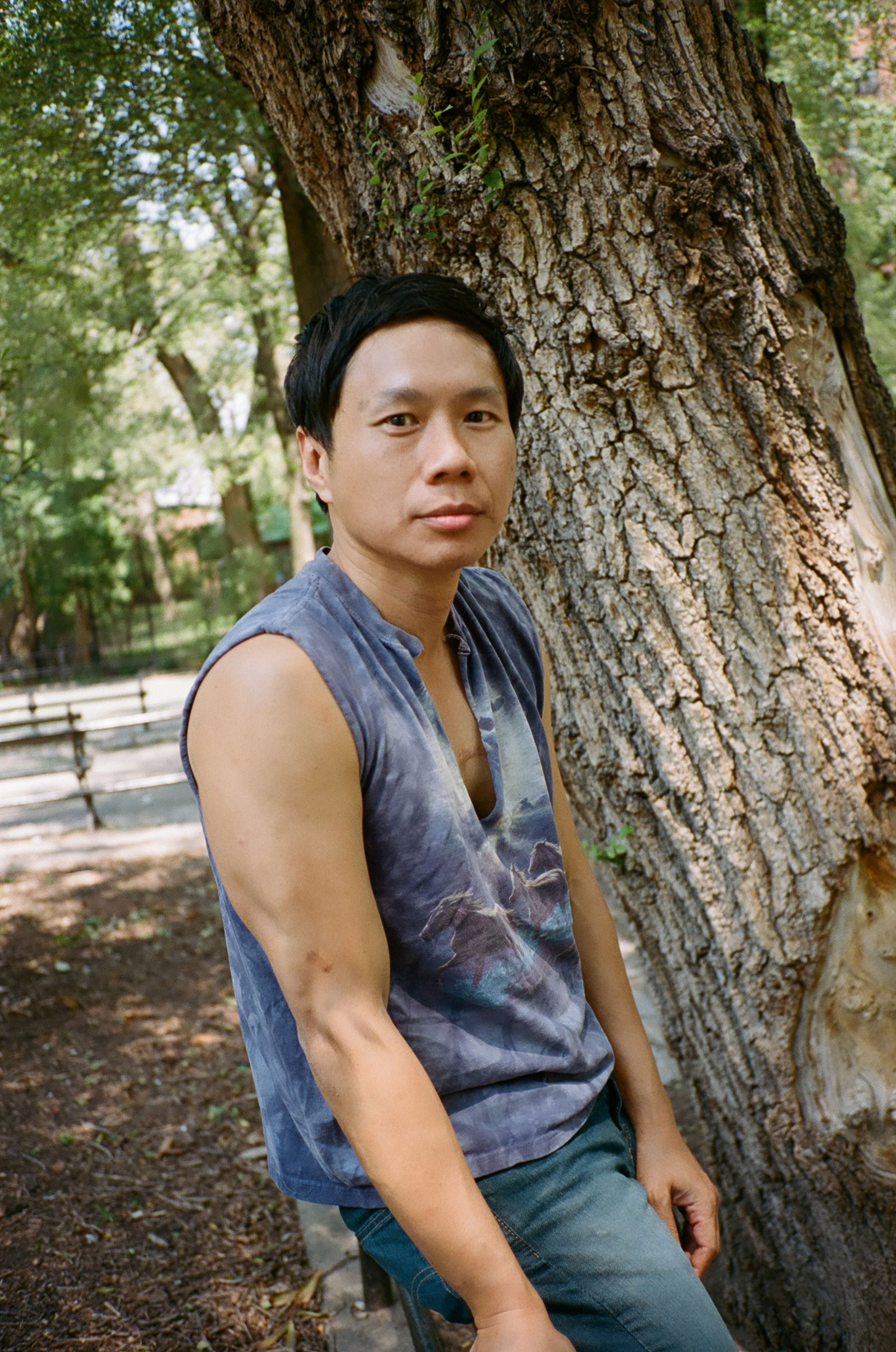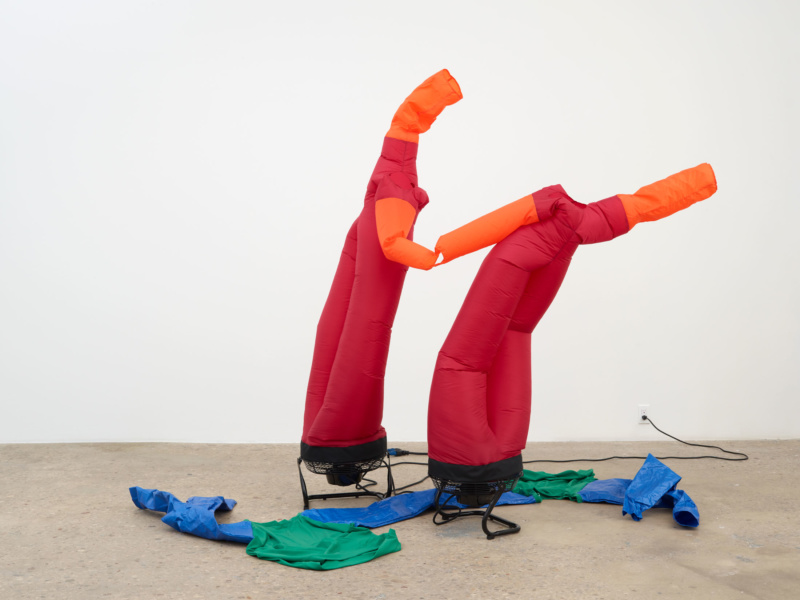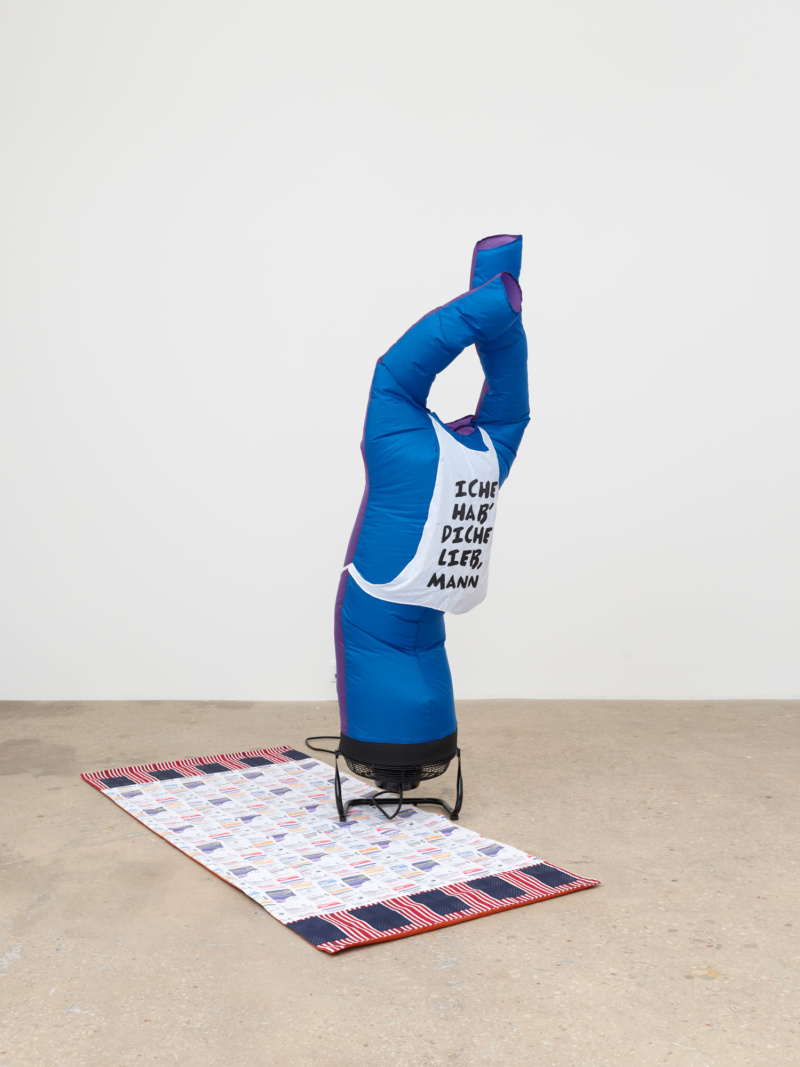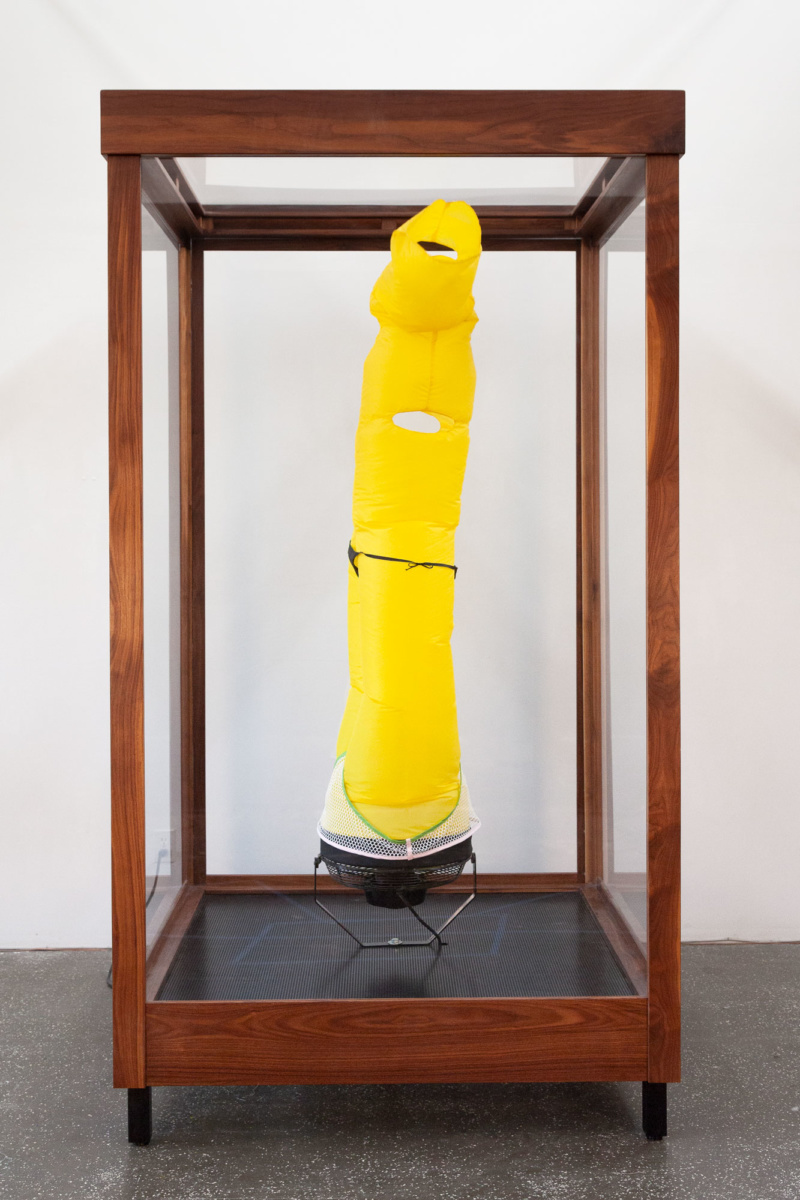
It was both an accident and not that Paul Chan began making the series he calls Breathers. Messing around one day in the studio of the artist (and his friend) Rachel Harrison, he noticed a fan on the ground. It was broken, and would only point upward.
“I thought, God, that looks like those fans where you strap a piece of fabric on it—like those weirdo guys at a used car dealership, you know?” Chan said recently at the office of his independent press, Badlands Unlimited, on the Lower East Side. “I kept looking at it, and then I sewed one. I had never sewn before.”
That was November of 2013. About four years later—after an intensive study of sewing, patternmaking, fluid dynamics, geometry, textiles and other areas of his own inexpertise—Chan had completed his first cohort of breathers, presented in a show titled “Rhi Anima” at Greene Naftali, where he has been represented since 2003. Bearing only a slight resemblance to “those weirdo guys” (also known as air dancers, sky dancers or tube men), these were more ghoulish and more expressive, imbued with character: vulnerable, menacing, childlike, scheming, prayerful. Made from ripstop nylon attached to electric fans, each performed its own jerking, rippling pattern of movement, animated by nothing but air. Chan has called them “clothes for spirits.”

Stumbling on a broken object that yields a new body of work sounds serendipitous, and it was. But Chan had also been consciously seeking a new direction, attempting, as he often says these days, to “cheat my own fate.” In the decade leading up to 2009, the year he embarked on a long hiatus from art-making (he claimed to be “retiring” at the time), he had become known for his digital video animations and their often apocalyptic social critiques. By 2008, when he was 35, his works had entered the permanent collections of the Museum of Modern Art, the Whitney Museum and the Walker Art Center. But his medium began to exhaust him. “I hit peak screen,” he says. “I made work that I was very proud of, screen work. But I think our relationship to screens has changed since then. I know mine has. I don’t want to look at a screen of any kind.”
Still, he hadn’t lost interest in moving images, and wondered how he might keep making them, without relying on screens—or people—as aesthetic elements. “I like people,” he says, “but I don’t necessarily want to work with them all the time.” The breathers were his solution. And much like starting a press with no publishing experience, as he did with Badlands on his art-making hiatus, they posed a sufficient challenge; a project doesn’t hold his attention, he says, “unless it’s impossible.” (He also knows when it’s time to let go; Badlands marks the end of its current iteration with the exhibition “Publish or Perish: 8 Years of Badlands Unlimited,” through October 20 at the Lower East Side space.)

For each breather, Chan sets out with a specific choreography in mind. He typically creates 30 to 40 prototypes before achieving the desired movement, experimenting with patterns, fabrics and air pressure. “At its best, it works like a video loop,” he says. “You turn it on, and there’s an ensemble of movement baked into the shape.”
Still dependent on screens for practical purposes, Chan opens his laptop to play videos of Bropheus and Phenus 1, two works in his fall show at Greene Naftali, “The Bather’s Dilemma.” The exhibition includes a subset of Breathers he calls Bathers: less imposing than earlier works in the series—and more beach-ready, accessorized with bikinis, towels and undershirts. Based on “drunk guys I’ve seen,” Chan says, Bropheus droopily pitches forward and buckles back, sporting a tank top that reads “I love you, man” in German. Based on a classic bather pose in art, Phenus 1 sways seductively, abstracted elbows raised to drape a towel behind their back. Chan envisions them at “Daytona Beach for Martians.”

While there’s clear levity in the bathers, they also call up weightier personal and political themes. Air as a material has particular significance for Chan, who, since his childhood in Hong Kong and Omaha, Nebraska, has been asthmatic. He modeled the hunched and struggling La Baigneur 7 [Teenyelemachus] after someone having a respiratory attack, and he calls it “as close to a self-portrait as it gets.”
He has also been contemplating the relationship between water and pleasure, the subject of his section of “Artistic License,” the Guggenheim’s current artist-curated exhibition. “My argument is that pleasure, broadly speaking, is a form of renewal,” he says. “And so if you believe that, what does pleasure mean today, in these very tough and mean times? Is it a luxury only for the people who can afford it? Or is it something that helps us renew our senses, so that we can better take on what the day demands?”
Whether people will take pleasure in the bathers is hard to predict. But, Chan says, “They certainly replenished me.”



